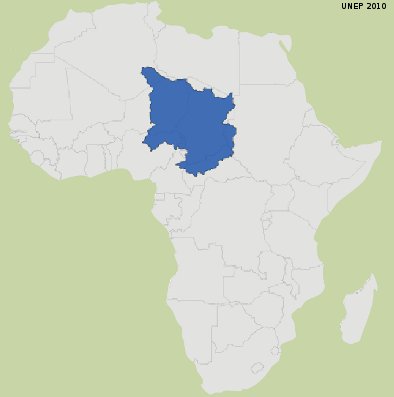The lake constitutes a strategic source of freshwater for the countries, which is also central to the livelihoods in the basin.
Economy and population growth
The population of the drainage basin is growing rapidly and was estimated at about 37 million people in 2004 with a high average growth rate of 2.4-2.6%.
Agriculture has always been the backbone of the regional economy and continues to engage about 60% of the basin’s population. However, annual average rainfall over the entire basin is rather low at 320 mm and varying between 1, 500 mm in the southern parts of the region to less than 100 mm in the northern parts of Chad.
Over the last two decades the annual population growth in the region has ranged between 2.5 and 3.0%. The current population within the region is estimated to be approximately 37.2 million people.
Comission du Bassin du Lac Tchad
In 1964 the countries created the Lake Chad Basin Commission (LCBC), its French name is Commission du Bassin du Lac Tchad (CBLT). Its aims were to regulate and control the use of water and other natural resources in the basin as well as initiate, promote, and coordinate natural resource development projects and research.
The commission in addition was designed to resolve disputes that could arise over the lake and its resources. Being on the fringe of the Sahara, high temperatures mean that evaporation rates of the lake's water are high (estimated at 2000mm/year). The levels of the lake have fluctuated over decades, centuries and millennia, responding to changes in the global temperature and regional precipitation.
Human activities in the lake's watershed require that increasing amounts of water be withdrawn for irrigation activities and other purposes. At the same time as the population's demand for water is increasing, the climate in the region has been changing in ways that have apparently not been seen in a thousand years or more.
The recent drying out of the lake apparently started in the 1960s and has continued for almost two decades. This drying out is attributed to reduced rainfall and continued high temperatures. Today, the surface area of the lake barely reaches 1350 square km.
Climate change and its consequences
For about four decades today recurring droughts, a general decline in rainfalls, and degradation of the vegetation cover have led to drastic changes in the environmental conditions of the Lake Basin. The drying up of Lake Chad, the encroachment of the desert, and the decline of agriculture, livestock and fisheries, threatens the social and economic well-being of over 22 million people living in the Basin.
The climate in the Lake Chad drainage basin is semiarid in the south and arid in the north. The annual average rainfall over the entire basin is 320 mm varying between 1, 500 mm in the southern parts of the region to less than 100 mm in the northern parts of Chad. The annual maximum temperatures are as high as 35-40°C particularly in the northern parts of the region.
The annual temperature of the lake averages 21.4°C. Lake Chad is under the influence of the Inter-Tropical convergence zone (ITCZ) which oscillates seasonally between about 150 N and 150S.In the north of the ITCZ high pressured air blowing from the Sahara desert suppresses rainfall. Low rainfall is accompanied by excessively high temperatures in all arid lands.
According to IPCC, the Sahel has experienced the most substantial and sustained decline in rainfall recorded anywhere in the world in the past 30 years within the period of instrumental measurements.
The dramatic decrease in the surface area and volume of Lake Chad has been attributed to regional and global climate change as well as water management practices. Climate change thus remains a major determinant of the future of the lake’s volume and surface area.
